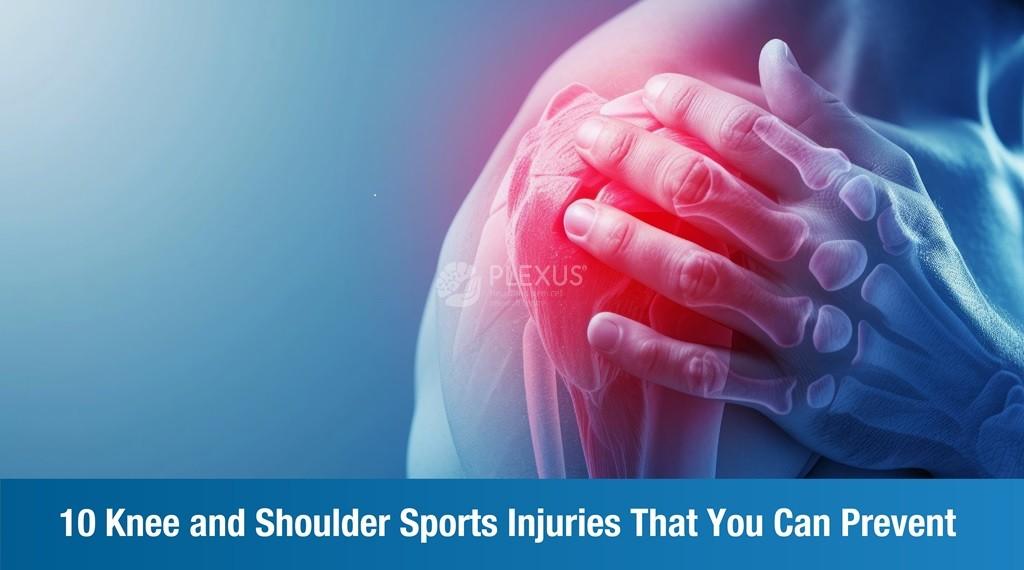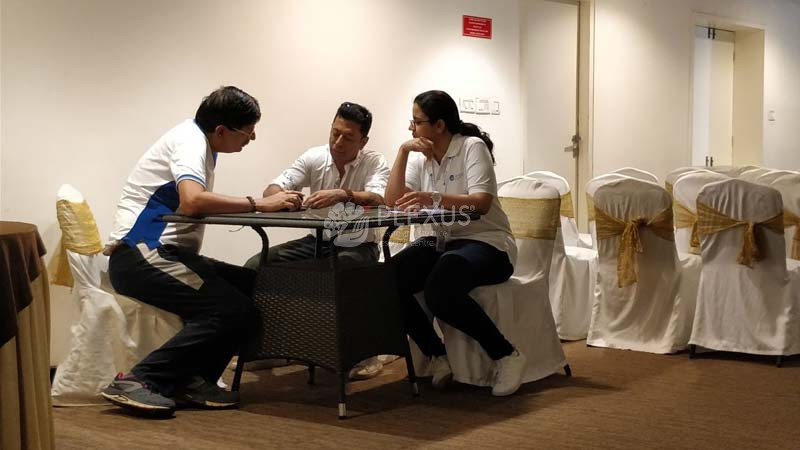
Do you remember Mohammed Shami’s sports injury in the 2015 World Cup? Well, it made headlines at the time.
The Indian fast bowler had played his matches with a fractured knee — an injury that had caused him discomfort during the tournament. Even after the World Cup, it kept him out of the game for almost nine months as he underwent surgery and rehabilitation.
But despite the name, sports injuries are not limited to athletes. For every cricketer who sprains their shoulder or footballer who dislocates their knee joint, there is a non-athlete who does the same during their morning run or evening workout. Whether you’re a seasoned athlete or a fitness enthusiast, understanding and addressing these potential injuries can contribute to a long and injury-free sporting journey. Through this blog, we’ll throw light on the top 10 knee and shoulder injuries that we’ve encountered, as well as discuss effective prevention strategies.
What are Sports Injuries?
The term sports injury — in the broadest sense — refers to the kinds of injuries that most commonly occur during sports or any physical exercise. They usually involve the muscles, bones, and associated tissues like cartilage. There are two kinds of sports injuries:
Acute Injuries: An injury that occurs suddenly, such as a sprained ankle due to an awkward landing. Some of the symptoms are sudden, severe pain, swelling, sensitivity in the affected area, and an inability to move.
Chronic Injuries: They develop slowly and are characterized by swelling, pain while performing an activity, and a dull ache when at rest. They are caused by repeated overuse of muscle groups or joints.
What are the Common Types of Sports Injuries?
In the world of athletic endeavors, common sports injuries include sprains, strains, swollen muscles, fractures, dislocations, rotator cuff injuries, and others.
Here we have compiled a list of common sports injuries related to your knees and shoulders that you can avoid the next time you are playing a sport:
Knee Fractures
Fractures can happen to any of the bones in or around the knee due to high impact trauma. However, the most commonly broken bone in the joint is the patella or kneecap that protects it from injuries or further damage.
When you directly fall onto your knees or collide with a person, your kneecap cracks due to the force, which makes the kneecap susceptible to fractures.
Knee Dislocations
When the bones of the knee are out of their proper placement and alignment, the knee becomes dislocated.
It can occur due to structural abnormalities or traumas such as a fall, collision, or even contact sports, and can include damage to the blood vessels and nerves about the knee.
Knee Sprains
Knee sprains are extremely common in sports. They occur when the knee is overextended or moved unnaturally, the ligaments that hold the knee together are unable to support the movement. There are varying degrees to them, depending on their severity.
Meniscal Tears
The menisci are two rubbery wedges of cartilage that act as shock absorbers and smooth cushions for the thigh bone. Any damage to the inside of the knee can result in a torn meniscus. It is common in sporting activities that involve jumping or twisting, such as volleyball or soccer.
Tendon Tears
Often referred to as a jumper\’s knee (since it is common among athletes who are involved in running or jumping sports), it is an injury to the tendon that connects the kneecap to the shinbone. Landing awkwardly after coming down from a jump or a severe fall can cause a stretched tendon due to the direct force to the knee.
Rotator Cuff Tear
A rotator cuff is a group of muscles and tendons that hold the bones of the shoulder joint together. It provides individuals with the ability to lift their arms and reach overhead. A repetitive stress injury or overzealous, overpowered arm swings may tear or rip any of these tendons.
Shoulder Instability
When muscles and ligaments that hold the shoulder together stretch beyond their normal limits, they become unstable. Such an injury can cause pain that comes on either quickly or gradually, and most commonly occurs in contact sports in which athletes repeatedly fall on their shoulders.
Shoulder Impingement
Often referred to as the swimmer’s shoulder or thrower’s shoulder, it is caused by excessive rubbing of the shoulder muscles against the top part of the shoulder blade. It commonly occurs in sporting activities such as throwing, racket sports, or swimming.
Shoulder Bursitis
Inside each of your shoulders is a tiny, fluid-filled sac known as a bursa that helps reduce friction between the bones in your joints. When the bursa in your shoulder becomes inflamed or swollen, it leads to a condition known as shoulder bursitis.
Dislocated Shoulder
The shoulder is relatively easy to dislocate because it can move in so many directions and is looser than most other joints. A shoulder dislocation occurs when the head of the humerus (upper arm bone) pops out of the shoulder joint.
Comprehensive Approach to Sports Injury Prevention
While we understand that not all injuries are preventable, we do believe that in order to maintain an active and healthy lifestyle, being careful and mindful of our movements is essential. It is important to prioritize your health in order to enjoy sustained performance, prolonged sports careers, as well as an enhanced quality of life. Here are Plexus’ top 10 tips to help lower your risk of sports-related injuries:
Stay Hydrated
Proper hydration is vital for overall health and can help prevent muscle cramps and fatigue. Drink water regularly, especially during intense physical activities.
Proper Nutrition
A well-balanced diet will always support your overall health and fitness. Proper nutrition will ensure your body receives essential nutrients for muscle repair and recovery, reducing the risk of injuries.
Warm-Up Adequately
Always start with a thorough warm-up before engaging in any sports activity. This helps increase blood flow to muscles, improve flexibility, and prepare the body for more intense physical activity.
Gradual Progression
You don’t have to lift 50 lbs on Day 1 of your fitness journey. Nor do you have to do it on Day 20. Avoid sudden spikes in intensity or duration of physical activity. It is always better to gradually increase the intensity and even duration of your workouts. Allow your body to adapt and minimize the risk of overuse injuries.
Proper Technique
Make sure you’re using the correct technique for your sport or exercise. Seek help from a certified trainer to understand proper form and technique. Improper form increases the risk of injuries. Take the time to learn and practice the right techniques.
Appropriate Equipment
It is absolutely critical to use only well-fitted and appropriate sports equipment for your activity. This includes footwear, protective gear, and any other equipment recommended for your sport or workout. Proper equipment will provide optimal support and lower the risk of injuries significantly.
Cross-Train
It is always good to engage in a variety of physical activities. This helps prevent overuse of specific muscle groups and greatly lowers the risk of repetitive strain injuries. Cross-training also helps maintain overall fitness, and improves balance and coordination.
Strength Training and Conditioning
Strength training and conditioning exercises help build strength in the muscles surrounding joints and can enhance stability. They also reduce the risk of injuries.
Listen to Your Body
If you experience ANY signs of pain, discomfort, or fatigue stop play or workout immediately! If you experience persistent pain or discomfort, consult your doctor.
Rest and Recovery
Rest is essential. Whether you’re an athlete, gym-goer, or a stay-at-home parent, everyone needs a Rest Day. It prevents fatigue from setting in. Rest well to recover from days of hard work. This will also help reduce the risk of injuries.
Wrapping Up!
Sports injuries require immediate intervention to prevent further damage and improve quality of life. So, instead of remaining benched and out of action, take the first step towards recovery by getting in touch with us at our centers in Bangalore and Hyderabad.
We offer the best Sports Rehabilitation programs that can be customized to treat your particular injury, symptoms, and other needs.
Our holistic rehabilitation includes physical therapy, pain management, nutritive therapies, sports rehabilitation therapy, and stem cell therapy.
Read all about stem cell therapy for sports injuries here.
FAQs
How can sports injuries be prevented?
Sports injuries can be prevented through proper warm-ups, conditioning exercises, adequate rest, and the use of protective gear. Maintaining proper technique, staying hydrated, and incorporating cross-training can also contribute to injury prevention.
What are the most common knee injuries in sports?
Common knee injuries in sports include anterior cruciate ligament (ACL) tears, meniscus injuries, patellar tendonitis, and medial collateral ligament (MCL) sprains.
What’s the worst knee injury?
Complete tear of the ACL is regarded as the most painful (worst) knee injury. Traditionally, this injury required surgical intervention. However, at our centers in Bangalore and Hyderabad we offer regenerative rehabilitation programs for ACL tears that can significantly improve the individual’s stability and function.
What is a knee sports injury?
A knee sports injury refers to any damage or trauma sustained by the knee joint during a sport and/or athletic activity. Ligament tears, meniscus injuries, and patellar issues are examples of knee sports injuries. They range from mild to severe, and impact the athlete’s on-field performance to a great extent. They require medical attention and rehabilitation.










